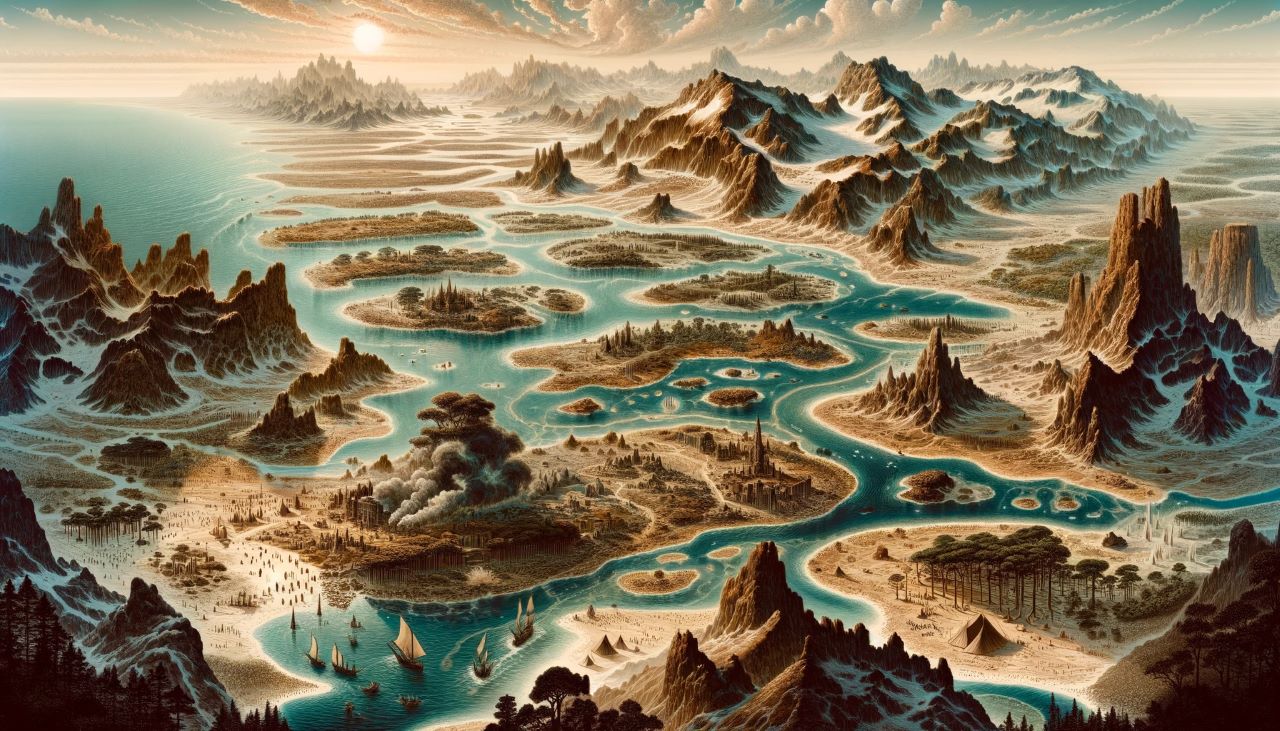Recent research has cast a vivid light on the ancient terrains of Sahul, the massive landmass that, during the Ice Age, connected Australia, New Guinea, and smaller surrounding islands. This revelation not only offers a deeper understanding of early human migration but also illustrates the profound effects of climate change on ancient populations.
Ancient Landscapes and Demographic Dynamics
During the last Ice Age, Sahul presented a significantly different landscape than what we see today. Lower sea levels exposed vast expanses of dry land, particularly in northwestern Australia, knitting regions like the Kimberley and Arnhem Land into a contiguous area. Advanced analysis of high-resolution bathymetric data has unveiled that these regions, now submerged, formed an extensive archipelago during certain periods, providing a stable and habitable environment for early human populations for thousands of years.
The research suggests that these now-submerged lands could have supported large populations, ranging from 50,000 to half a million people at different times, depending on the carrying capacities during various Marine Isotope Stages. However, rapid sea level rises due to melting ice caps brought drastic changes, inundating significant portions of the Northwest Shelf and altering the living spaces of ancient humans within a few generations.
Tracing Human Migration and Cultural Evolution
The existence of the Sahul archipelago likely played a pivotal role in the successful dispersal of the first maritime explorers from Wallacea, modern-day Indonesia. The familiar island environments might have eased these early humans’ adaptation to the vast Sahul continent. As they settled and spread across this terrain, their cultures and societies evolved, as evidenced by the emergence of new rock art styles and archaeological findings.
However, the dramatic climate shifts and the rising seas forced these populations to adapt or move, leaving behind a rich archaeological record that sheds light on their resilience and ingenuity. The demographic models, supported by genetic research, indicate that populations reached a peak size around 20,000 years ago, coinciding with the height of the last Ice Age. This period of population growth is further evidenced by genetic studies of the Tiwi Islanders, indicating a thriving community in the region during that era.
A Call for Reevaluation and Further Research
The insights gained from the ancient Sahul landscapes urge a reevaluation of the narrative surrounding early human migration and the impacts of climate change on these ancient populations. The research highlights the crucial role that submerged continental margins played in human history and the importance of considering these landscapes in discussions of early human expansions.
With the rise of undersea archaeology, submerged landscapes continue to provide invaluable insights into our shared human history. As researchers explore and analyze these underwater sites, more secrets of ancient human life and migration patterns are expected to come to light, contributing to a more comprehensive understanding of our past




